| View previous topic :: View next topic |
| Author |
Message |
bob kerr

Joined: 13 Nov 2011
Posts: 638
Location: Monroeville PA



|
 Posted: Jan 23, 2023 22:40 Post subject: Re: Unique Schorl Double Terminations Posted: Jan 23, 2023 22:40 Post subject: Re: Unique Schorl Double Terminations |
|
|
I may be able to get an analysis of these in a few months and will report back.
In the meantime - here's a photo of the "rough" terminations of another of these specimens (with aquamarine). Note the "attempt to terminate in the "typical" tourmaline form" (sorry, don't know what else to call this).
stay tuned,
bob
| Mineral: | Schorl |
| Description: |
|
| Viewed: |
14649 Time(s) |
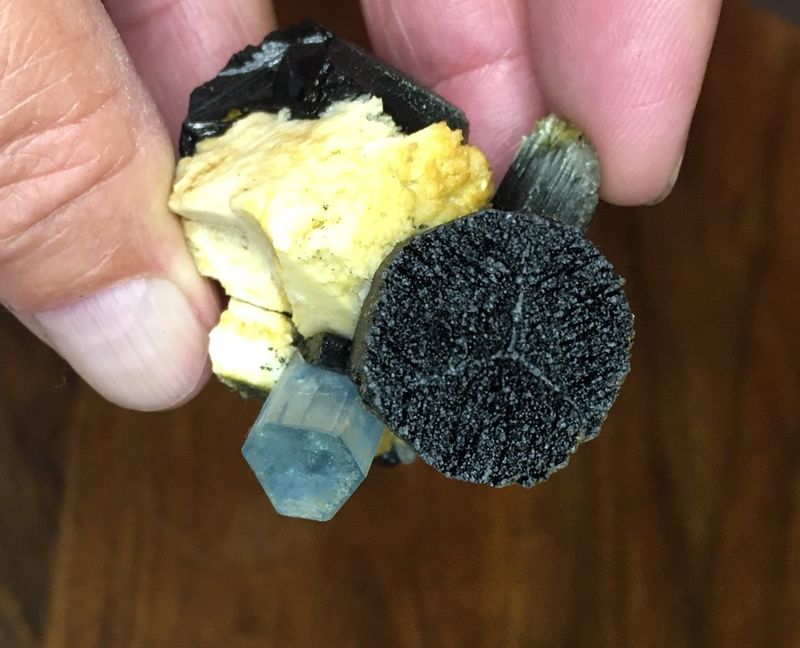
|
|
|
| Back to top |
|
 |
Roger Warin

Joined: 23 Jan 2013
Posts: 1246



|
 Posted: Jan 24, 2023 14:28 Post subject: Re: Unique Schorl Double Terminations Posted: Jan 24, 2023 14:28 Post subject: Re: Unique Schorl Double Terminations |
|
|
For me, the head of the crystal is not rough but demonstrative.
This is still fast growing because edges grow faster than faces.
The Mercedes Cross highlights the ternary c axis of the tourmaline.
The axis grows faster than its neighbors and the edges are also highlighted.
It remains to determine what is the dihedral angle between the two faces that these 3 edges separate. You need at least a big magnifying glass. I could take a picture, but my binocular is far from the crystal...
I am inclined to think that it is the antilogous pole which is for me (so this is only an opinion), the pole of faster growth than the lower pole called analogous (non-symmetrical). This is the basis (in the literary sense) of the prism.
So I tend to say that tourmaline “grows like a leek” and does not stretch downwards!
|
|
| Back to top |
|
 |
Roger Warin

Joined: 23 Jan 2013
Posts: 1246



|
 Posted: Jan 25, 2023 06:14 Post subject: Re: Unique Schorl Double Terminations Posted: Jan 25, 2023 06:14 Post subject: Re: Unique Schorl Double Terminations |
|
|
Hello,
I warmly thank Bob Kerr for pulling a magnificent specimen out of his conjurer's hat.
Having spent my life as a researcher-teacher (chemistry), I have often explored borders to understand Nature.
Thanks to Bob, I am writing a story for the youngsters of my club (www.AGAB.be) on the growth of tourmaline.
I rummaged through my dusty drawers and found a Schorl with the wrong label (Pakistan). I bought this small specimen from an exhibitor in Eastern Europe, in Liege (Belgium) at Interterminéral 2000, in November. Obviously, it comes from Erongo.
Not being sexy, this specimen remained in the dust-free drawer for 22 years.
But today what a nice surprise, I found the beginning of a new story.
I present 2 pictures:
1) Ordinary photo.
2) Ditto, with high magnification, since the photo has a FOV = 1.3 mm.
I will thus illustrate the growth of tourmaline, taking into account its structure with multiple cations (more tomorrow maybe).
| Mineral: | Tourmaline var Schorl |
| Locality: | | Erongo Mountain, Usakos, Erongo Region, Namibia |  |
|
| Dimensions: | 4.5 cm |
| Description: |
|
| Viewed: |
14453 Time(s) |
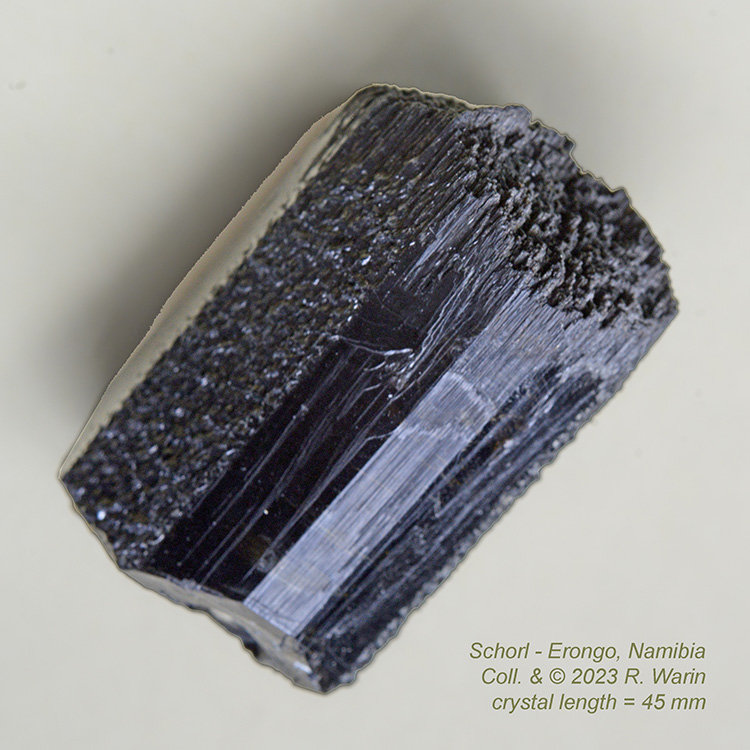
|
| Mineral: | Tourmaline var Schorl |
| Description: |
|
| Viewed: |
14445 Time(s) |
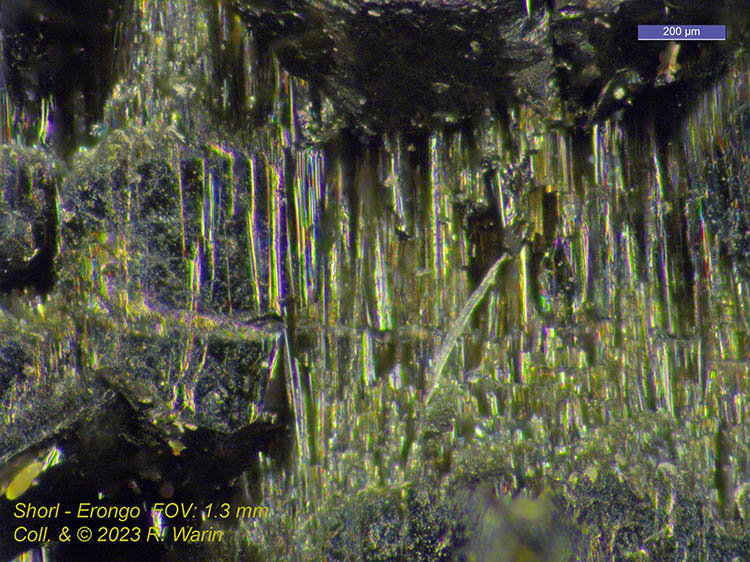
|
|
|
| Back to top |
|
 |
Peter Lemkin
Joined: 18 Nov 2016
Posts: 403
Location: Prague


|
 Posted: Jan 25, 2023 06:19 Post subject: Re: Unique Schorl Double Terminations Posted: Jan 25, 2023 06:19 Post subject: Re: Unique Schorl Double Terminations |
|
|
| I have one of these schorl from Erongo and have seen many being sold. They all seem to be the same - one 'normal' termination and the other side having what seems [to me] to be hundreds of parallel epitactic smaller xx. Someone must have written a paper on this already [my guess]...I'll see if I can find one, as this interests me too for my specimen. If unique, I might even buy some others - they are regularly offered at shows and I have avoided buying the largest and best, as I didn't know what was really going on.
|
|
| Back to top |
|
 |
Roger Warin

Joined: 23 Jan 2013
Posts: 1246



|
 Posted: Jan 26, 2023 15:42 Post subject: Re: Unique Schorl Double Terminations Posted: Jan 26, 2023 15:42 Post subject: Re: Unique Schorl Double Terminations |
|
|
Hello,
Paraphrasing the words of Pete Richards, I would say that all chemistry and biochemistry obey these laws:
I find the shapes of crystals to be among the most elegant manifestations of the self-organizing principles of our world!
Pete once answered on the subject of tourmaline epitaxy, on this forum (Posted Apr 23, 2022 00:53 Post subject: Re: Tourmaline - Quartz epitaxy?).
I really like this growth differentiation of some Schorls from Erongo.
I had never seen such a photo as the one I just took.
The appearance of the different faces of the prisms of this tourmaline facilitates morphological analysis since the ridges on the top allow the crystal to be oriented.
Erongo Schorl can undergo modifications at the end of growth which are not epitaxies but parallel growths in the final phase following a change in the composition of the mother liquors.
I explain this phenomenon by a loss of iron at the end of crystallization, with a very weak extension of the Schorl (without iron) in tourmaline (elbaite perhaps) over a few hundred microns. These local extensions of the Schorl become yellowish-green, almost colorless.
What is your opinion ?
| Mineral: | Tourmaline var Schorl |
| Description: |
|
| Viewed: |
14291 Time(s) |
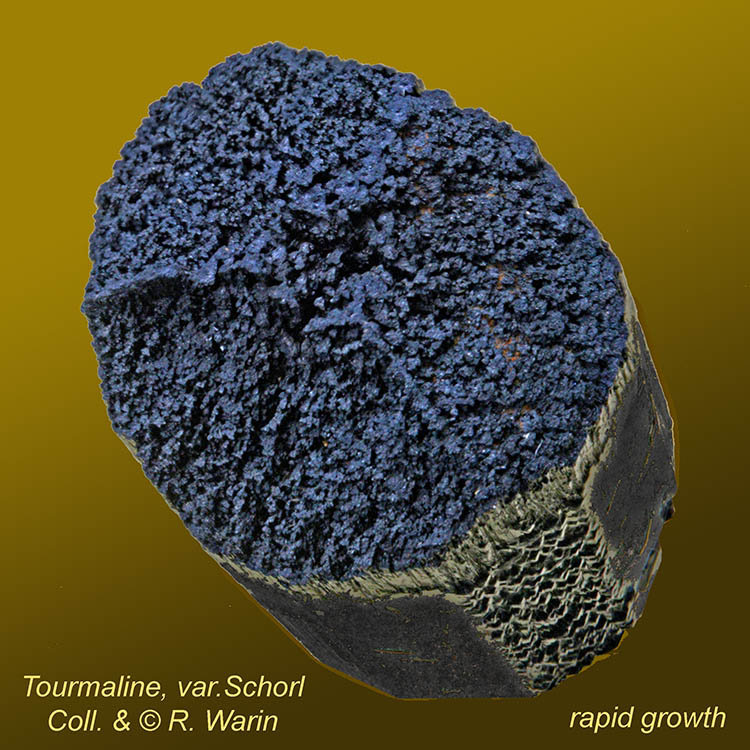
|
| Mineral: | Tourmaline var Schorl |
| Description: |
|
| Viewed: |
14303 Time(s) |
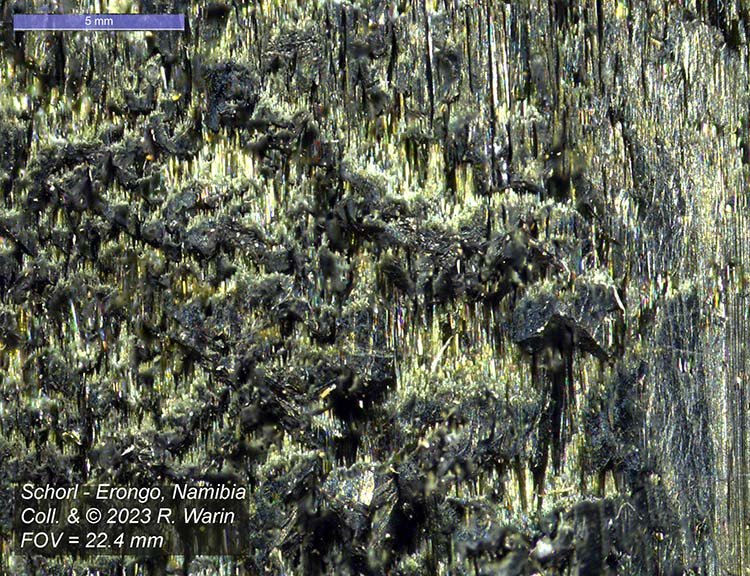
|
| Mineral: | Tourmaline var Schorl |
| Description: |
|
| Viewed: |
14289 Time(s) |
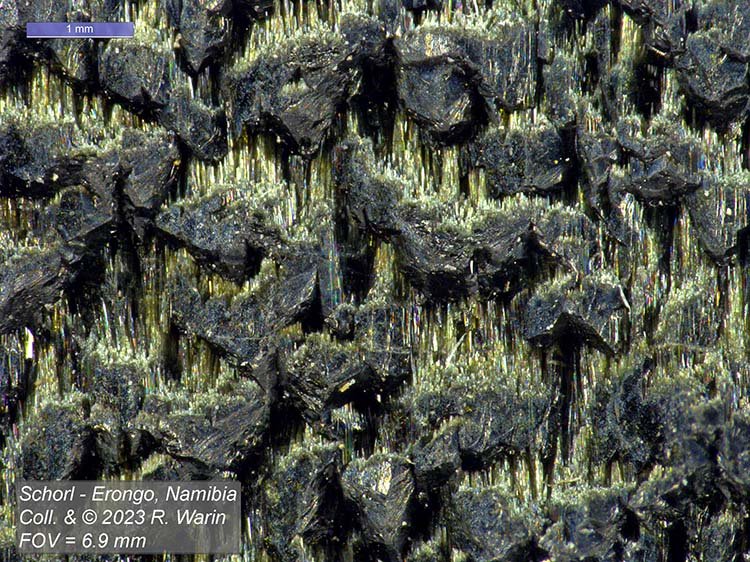
|
| Mineral: | Tourmaline var Schorl |
| Description: |
|
| Viewed: |
14267 Time(s) |
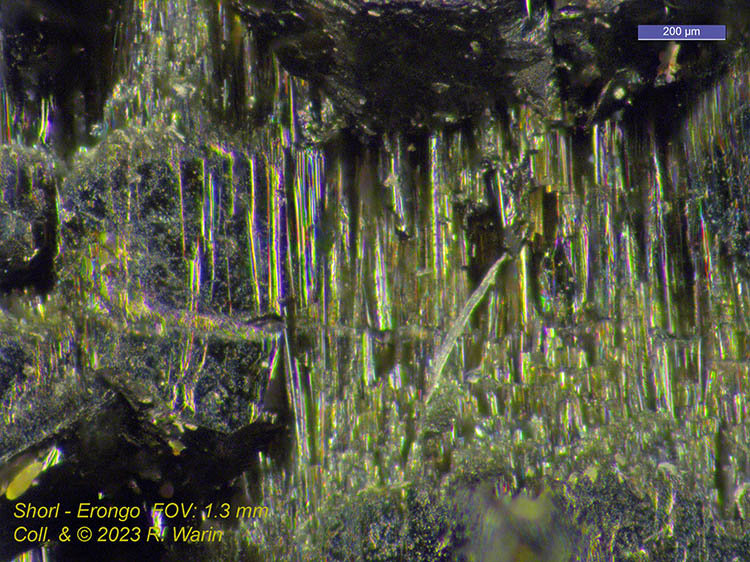
|
|
|
| Back to top |
|
 |
|





